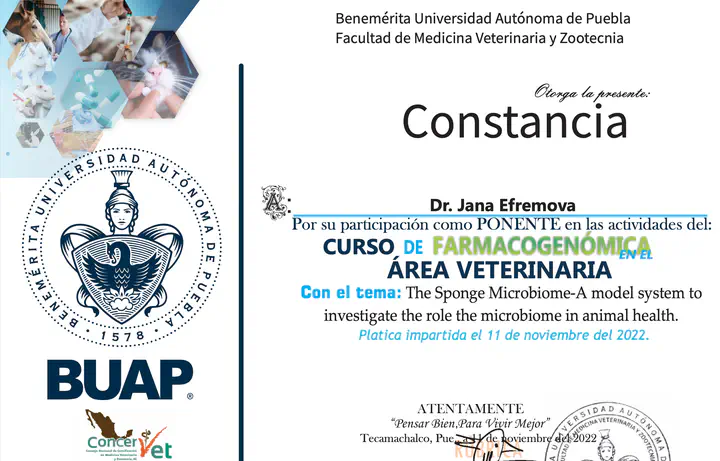Microbial and Metabolic Trends as Health Indicators in Marine Sponges – Insights from our Earliest Metazoan Ancestors (University Lecture)

Abstract
Marine sponges are the earliest multicellular metazoan organisms forming strong symbiotic associations to a complex microbiome. As evolutionary ancestors, the analysis of sponge-associated microbes can give insights into the importance of a microbiome integrity for organismal health and resilience to external physiological stressors. Here we present how sponge holobionts, i.e. the sponge host and it’s symbiotic consortium, is coping with the climate change related environmental stressor: ocean acidification. Ocean acidification is affecting our world’s oceans. The steadily increasing absorption of anthropogenic CO2 emissions into the seawater is predicted to decrease its pH by 0.5 for the year 2100. The impacts on marine microbiology and biochemistry are profound, resulting in an overall loss of biodiversity. Benthic reef organisms have to develop adaptive strategies to cope with this environmental stressor. Marine sponges are often classified as winner taxa in future scenarios, but mechanistic understanding is poor. Furthermore, this hypothesis is not generalizable for all species. The holobiont concept aims at assessing the sponge host and it’s closely associated symbiotic microbiome as a whole when evaluating health, adaptive traits and resilience to future trends. Sponges can therefore be categorized in high and low microbial abundance (HMA, LMA) species, depending on microbial densities in their mesohyl matrix. The HMA status implies more stable and diverse microbial communities, a denser mesohyl and more complex aquiferous systems composed of narrower and longer water channels which slow down seawater filtration rates. LMA sponges move larger quantities of water through their porous tissues to rapidly acquire small particulate matter to supply their nutritional needs. The increased water turn-over makes LMA sponges more exposed to external stressors, like changes in seawater chemistry, and possibly decrease their evolutionary success under ocean acidification. Here we compare the microbial composition of the HMA sponge Chondrosia reniformis and the LMA sponge Spirastrella cunctatrix sampled from a CO2 vent and control site in Ischia Island (Italy). Untargeted metabolomics data of sponge extracts further reveal the consequences of ocean acidification for primary and secondary metabolite production.